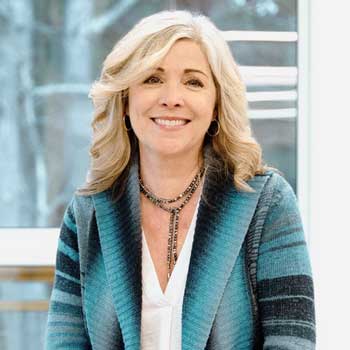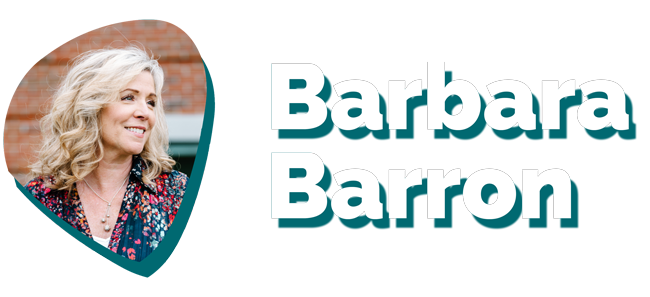by Barbara Barron | Posted November 5th, 2025 | Subscribe to this newsletter

A couple of weeks ago, I had the opportunity to speak to the Palmetto Association of Independent Schools Advancement & Mar-com cohort at their monthly online gathering. PAIS has super big schools and super small schools, and some in between. So, lots of places with one- or two-member advancement teams. Still other schools have one person doing both jobs! Their centering question for me was: how can advancement (and admission) work more collaboratively with mar-com?
Can you relate? I sure can.
I’ve worked at schools where the relationship I had with mar-com was close and trusting and together, we created effective and beautiful work. Other times, it felt more like I was competing with other departments for scant time and attention from mar-com. And still other times, I just went outside the school resources and hired a designer as a thought-partner and creator to help me create what I needed.
In my consulting, I’ve worked with schools that mirror each of my experiences. Other times, Mar-com feels a bit abused by the constantly changing requests or multiple drafts of projects from their advancement colleagues. One Director of Communication said it was like having to repeatedly “open up the patient”. Eek.
So, I’ve felt it; I’ve seen it. I knew I could address their question.
Have you subscribed to this newsletter yet? It only takes a minute.
Some tactical advice
I started by inquiring about the sources of friction. Most often, it’s a result of “competing mandates” and lack of clarity about priorities. And those come, dear readers, from our leaders.
As Peter Drucker said: “The bottleneck is always at the top of the bottle”.
So, when that’s the case, we must turn to our Heads and ask for help establishing priorities. We cannot do everything simultaneously, and well. Not possible. Get clear and you can get going.
Another way to build a better environment is to spend time together. Set and keep regular meetings to catch up, and to hear from one another what’s really going on for them. What’s on each of your plates? What’s keeping you awake at night? Get human and watch trust build. This won’t cure every ill but without trust, not much can.
Here’s some more tactical advice:
1. Build a shared calendar. Look at it through the lens of your parents’ experiences. When do they receive requests? When are they asked to attend something or give or share? And who is issuing those different requests?
2. Walk together through the upcoming months and look for the predictable traffic jams. Where can we either layer events or communication so we reduce some of the gnats-in-your-face feel of some of our communication to parents.
3. Create – and stick with! – agreed-upon throughline messages. These are about why families choose your school and why they support your school. Same messages that can be tweaked and used in admission and advancement.
4. Build a stockpile of testimonials. Like #3, some may be used for admission or advancement because they feature the answer to the essential question of why. Why give? Why enroll? Why volunteer? Why stay?
5. Share the wins. When you secure a nice gift, go tell Mar-com and thank them for their contribution. When they fix the nagging issues on the online giving form, be sure to let them know when you see gifts coming in, unimpeded.
The next level version of this is to make sure you brag on them to your Head and compliment their work at a faculty meeting or a Board meeting.
6. Debrief with care. When the mailing isn’t perfect, the annual report runs late, the pages on the site won’t load well, the video stalls, talk about it. Bring your most generous interpretation to that discussion. Figure out how you can fix it together. Express gratitude and a willingness to move on. And then do it.
7. Finally, I return to the project that I have personally seen do wonders for both the working relationship between these vital departments and increasing the amount of money the school raises: A Guide to Giving and Getting Involved. I’ve written about this smart project. I’ve watched those who build one deepen the very nature of the way they relate to one another. And I’ve seen it reduce the confusion new families experience when they join our school communities. Parents appreciate the clarity it gives them about what and when to expect the school to approach them for all manner of things. Like a good Swiss army knife, it serves many purposes.
At the end of the day, a good working relationship makes not only our hours at work more pleasant and productive, and less stressful, but it also makes the work itself better.
As always, thanks for everything you’re doing.

Barbara Barron
[email protected]
Share this post:

BARBARA BARRON is one of the most respected and highly sought-after independent advancement professionals in the country, having worked with dozens of schools in every corner of the United States.
She has raised over $20 million for schools where she served as the Director of Development. Barbara is a New York Times bestselling author, speaker, and presenter who currently advises dozens of schools in various capacities. She is considered a thought leader in the world of advancement, with her writing widely shared by professionals in development offices worldwide.
More Advancement Articles
- How Can Schools Assess Our Risk Appetite?

- Why We Need to Leverage Non-Cash Gifts in Light of the New Tax Laws

- How Advancement & Mar-com (with Admission!) Can Work Together with Better Outcomes for All

- How to Turn Good Volunteers Into Great Askers

- The Power of Trust

- How Can We Harness the Gift that is Donor-Advised Funds?

